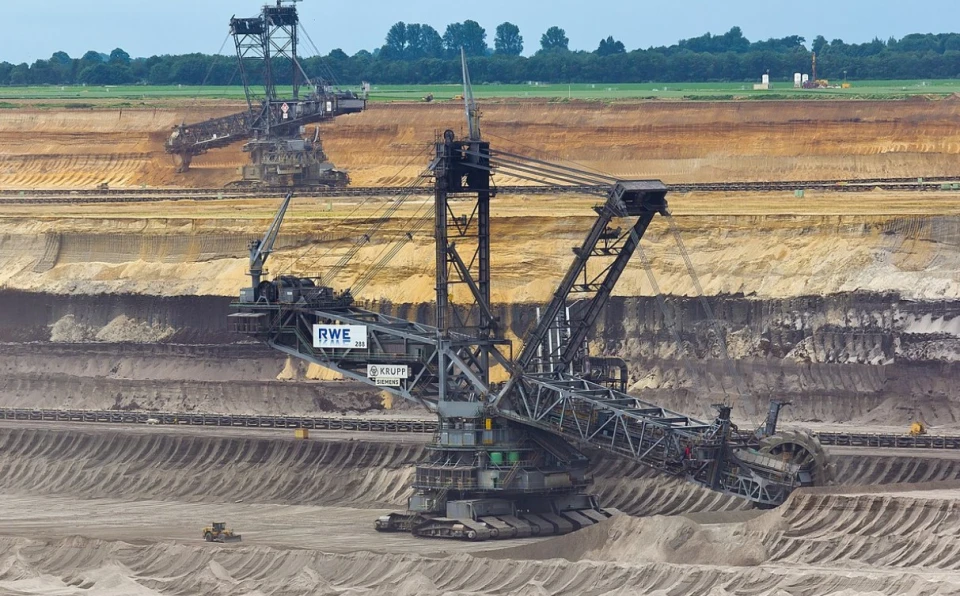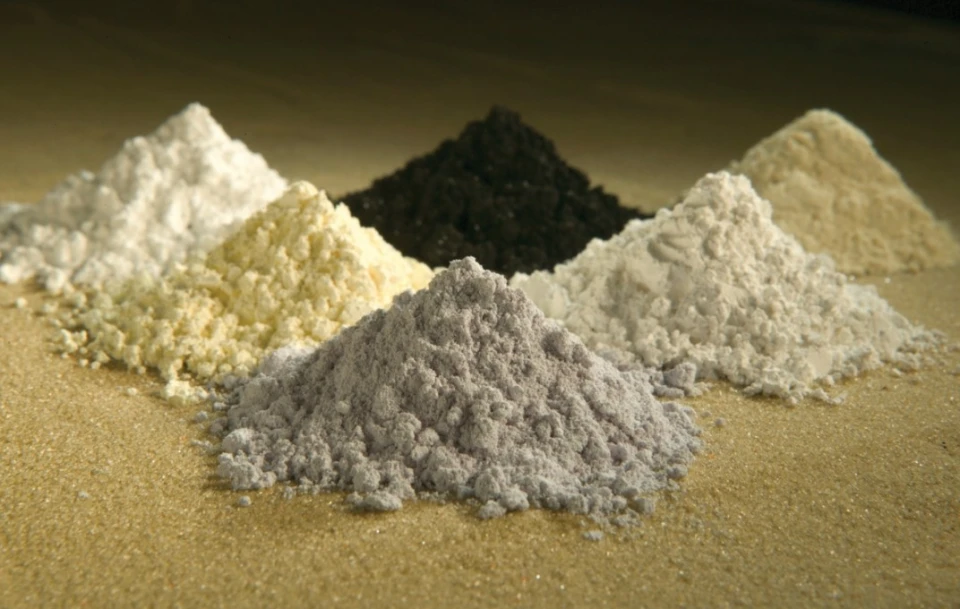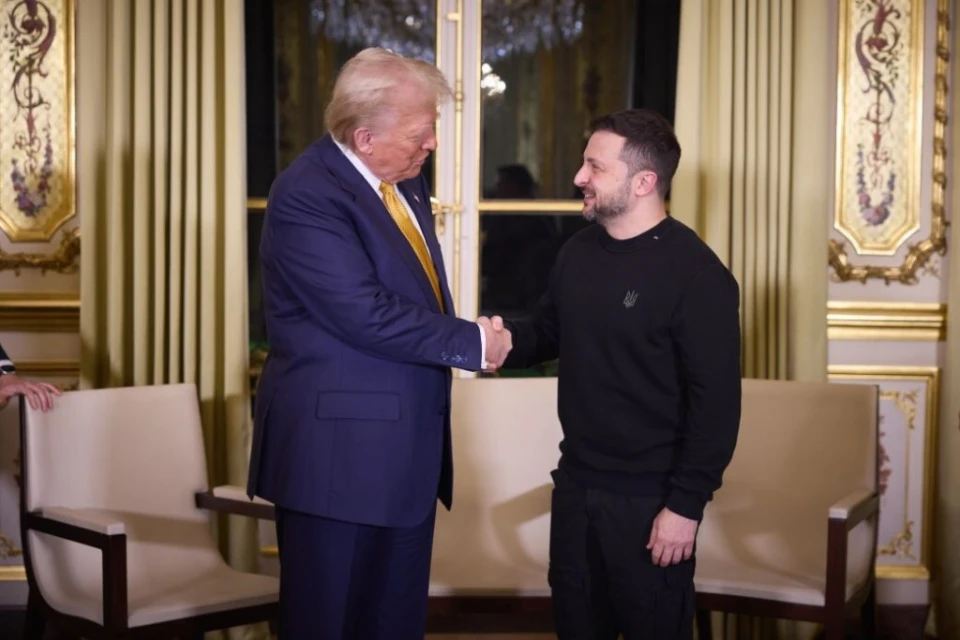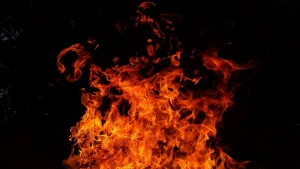
Trump, Zelenskyy, and rare earth resources: what Kyiv offers Washington
With Donald Trump's presidency, a new chapter began in talks and agreements between Kyiv and Washington. While under Biden, aid to Ukraine, despite significant delays, seemed like a given, under the new administration, the Americans openly raised the question: what will we gain from this, what economic benefit will it bring us?
Content
1. Why did the U.S. start talking about Ukraine's rare earth resources?
2. What are rare earth resources, why are they valuable, and why is the U.S. seeking them?
3. Does Ukraine really have rare earth resources, and what are the alternatives?
4. Why is the topic of rare earth materials a bargaining chip in broader negotiations to end the war?
Espreso explains why there is so much talk about Ukraine's rare earth materials, what benefits they bring to Americans, and whether they are really an important element in negotiations.
Why did the U.S. start talking about Ukraine's rare earth resources?

Ahead of the U.S. elections, Ukrainian President Volodymyr Zelenskyy, seemingly preparing for dealings with businessman-politician Trump, included two important points in his Victory Plan – security and strategic economic potential.
As revealed by the Financial Times, Kyiv specifically developed these points for Donald Trump, who had repeatedly complained about Americans funding Ukrainians without return (one of his campaign slogans), as well as his desire to reduce the U.S. military presence in Europe (pressure on NATO for Europeans to start paying for their own security). Therefore, the President's Office preemptively provided a clear response, outlining what Ukraine is willing to offer to ensure continued U.S. support in the war against the Russians – its soldiers and resources.
"Ukraine offers its strategic partners a special agreement for the joint protection of the country's critical resources, as well as joint investment and use of this economic potential. This involves natural resources and critical metals worth trillions of U.S. dollars, including uranium, titanium, lithium, graphite, and other strategically valuable resources, which are a significant advantage in global competition," states the description of the plan on the President's Office website.
President Zelenskyy directly presented this idea to Trump when he visited the U.S. in late September. At that time, Ukrainian authorities noted that the Republican leader showed interest in the "Victory Plan." Now, as can be gathered from the latest statements by the U.S. president, the bait has indeed been taken, to use fishing terminology.
Initially, in an interview with The New York Post, Trump modestly mentioned $500 million – the amount he was willing to propose for an agreement with the President of Ukraine regarding the extraction of rare earth minerals in exchange for security guarantees. However, just a few days later, the price tag increased by 1,000 times – to $500 billion (likely due to a verbal mistake). In an interview with Fox News, the U.S. president noted that Ukraine, "essentially," agreed to grant Washington access to rare earth minerals worth that amount.
"They have tremendously valuable land in terms of rare earth [minerals], in terms of oil and gas, in terms of other things. I want to have our money secured, because we’re spending hundreds of billions of dollars [in Ukraine]. They may make a deal. They may not make a deal. They may be Russian someday, or they may not be Russian someday. But we’re going to have all this money in [Ukraine] and I say, I want it back. I told them that I want the equivalent of like $500 billion worth of rare earth [minerals], and they’ve essentially agreed to do that," Trump said.
Europeans were skeptical about Trump's desire. In particular, German Chancellor Olaf Scholz accused the U.S. president of selfishness and stated that it would be better to use these Ukrainian resources for the country's post-war reconstruction.
Meanwhile, in Ukrainian society, after Donald Trump's statements, many ironic comments began to emerge (on social media), saying that if the Americans want Ukraine's rare earth resources, fine, send your soldiers and liberate them, because a significant portion of them is under occupation.
Although Volodymyr Zelenskyy has not specifically commented on the $500 billion, he recently told Reuters that he is ready to negotiate and conclude such an agreement with Trump. He stated that less than 20% of Ukraine's mineral resources, including about half of the rare earth element deposits, are under Russian occupation. According to him, Ukraine has the largest titanium reserves in Europe, essential for the aviation and space industries, as well as uranium, which is used for nuclear energy and weapons.
"The Americans helped the most, and therefore the Americans should earn the most. And they should have this priority, and they will," the President of Ukraine emphasized.
What are rare earth resources, why are they valuable, and why is the U.S. seeking them?

Rare earth elements are a group of 17 chemical elements, special metals found in the Earth's crust. They are not as rare as their name suggests, but they are difficult to find in their pure form because they are usually mixed with other substances.
The term "rare earth elements" originated in the 19th century due to initial misconceptions about their abundance and discovery. In reality, they are quite widespread but hard to extract, which makes them valuable. Extracting just a few kilograms of these metals requires processing tons of ore, which involves significant costs.
By the mid-20th century, India and Brazil were the main suppliers of rare earth elements. In the 1950s, leadership shifted to South Africa, and from the 1960s to the 1980s, the United States became the leading producer due to discovered reserves in California. However, today China dominates global production. According to the Center for Economic Strategy, global production of rare earth resources totals 354,000 tons, with China accounting for 68%, even though the country holds only a third of the known reserves. The United States ranks second with 12%, followed by Australia with 5%. Significant reserves are also found in Canada, Russia, Vietnam, Brazil, India, and other countries.
The use of rare earth resources increases each year, as they are essential for modern technologies due to their unique physical and chemical properties. As the world becomes more technological every day, rare earth elements are gaining strategic importance. They power our smartphones and various gadgets, improve the performance of smart technologies, are used in the production of batteries, are crucial for modern electric vehicles, and are indispensable for high-tech defense developments, medicine, space travel, and much more.
As is known, the U.S. is engaged in global competition with China in the technological, defense, and industrial sectors. Since China controls over half of the world’s rare earth metal production and nearly 90% of their processing, the U.S. is seeking alternative sources of supply.
It is no secret that China has long used its dominance in the rare earth market as an economic and political tool of influence. For example, in 2010, China already restricted exports of rare earth metals, causing a global crisis in this sector. Therefore, the U.S., aiming to reduce its dependence, is expanding its own extraction efforts, but this is not enough. As a result, the idea of utilizing Ukraine's reserves could help lessen America's reliance on the Chinese rare earth market and other valuable metals.
Does Ukraine really have rare earth resources, and what are the alternatives?
So, what is Ukraine's role in rare earth metal production now? It turns out that it is quite minimal, as we are talking about hypothetical significant deposits of these resources and their potential extraction.
According to Forbes, as of 2023, the total value of all of Ukraine's minerals was nearly $15 trillion, with over 70% of the total amount concentrated in just three regions – Donetsk, Dnipropetrovsk, and Luhansk. However, estimates by the Canadian geopolitical risk assessment firm SecDev for 2022 suggest that Ukraine has significantly more minerals – valued at $26 trillion. In a 2023 article in the Green European Journal, it was mentioned that Ukraine has "the largest reserve of rare earth elements in Europe that can be extracted," as well as some of the largest lithium reserves – ranging from $3 to $11.5 trillion.
According to analysts from CDI (the Defense Information Consortium), prepared with the team from Defence Express and available to Espreso, Ukraine ranks among the top five countries in the world for proven graphite reserves, amounting to over 1.2 million tons, which constitutes about 7% of the world's reserves. Lithium deposits are estimated at 500,000 tons, potentially making Ukraine one of the largest suppliers of this resource in Europe. Significant beryllium deposits are found in the Zhytomyr region at the Perzhansky deposit, with reserves estimated at 2.34 million tons of ore. Ukraine also holds 20% of the world's titanium reserves, particularly in the Zhytomyr, Dnipropetrovsk, and Zaporizhzhia regions. Uranium reserves amount to several hundred tons, concentrated in the Kirovohrad region.
However, Ukraine currently lacks a complete technological cycle for mining, processing, and producing final products from rare earth metals.
"The biggest problem is the lack of modern industrial facilities for the enrichment and processing of rare earth raw materials. Ukraine has no operating plants that can carry out the full cycle of purification and extraction of individual elements," note CDI analysts.
It is important to emphasize that all the mentioned figures are approximate, and no one has access to information about the exact reserves of valuable resources in Ukraine, including rare earth elements, as this is classified information. For example, data on lithium reserves in the country was first classified in 2005.
The Center for Economic Strategy noted that, in reality, Ukraine has very limited reserves of certain rare earth elements, and access to them is restricted, as part of them are located in temporarily occupied territories.
"Foreign investors are primarily interested in other strategic minerals that Ukraine has reserves of. This mainly includes titanium (used in machine engineering and the production of paints and plastics), lithium (for battery production, glass, and ceramics), and nickel," say analysts at the Center for Economic Strategy.
Volodymyr Landa, Senior Economist at the Center for Economic Strategy, confirmed on Espreso TV that "Ukraine essentially has no rare earth metals," but the expert suggested that Trump may have been referring not only to rare earth metals but generally to rare metals. This would include the previously mentioned titanium, lithium, and nickel. Landa added that some of these Ukrainian deposits are located on the front lines, and not all areas have undergone geological surveys to determine the exact quantities of these resources.
"If Ukrainian assets near the Russian border are co-owned by the Ukrainian state and investors from the U.S. and Europe, this will compel these countries to participate in the protection of these assets," emphasized Landa.
The same point was made on Espreso TV by the former head of the United Mining and Chemical Company, Yehor Perelyhin, who noted that when Trump spoke about Ukraine's rare earth metals, he was actually referring more to rare metals.
"The only deposit that could compete with the U.S. or China is located in the temporarily occupied Azov Sea region, and, as we understand, the prospects of developing this deposit are nearly impossible. In my opinion, we are talking about metals such as titanium, manganese, and minerals like graphite, beryllium, gallium, hafnium, zircon, etc.," he added.
Why is the topic of rare earth materials a bargaining chip in broader negotiations to end the war?

Although Ukraine has attracted the attention of the U.S. with its rare earth resources, the exact volumes of these deposits remain uncertain.
Moreover, as noted by the executive director of the National Association of Mining Industry of Ukraine, Ksenia Orynchak, in an interview on Espreso TV, further exploration of rare earth metals is needed to accurately determine what can be offered to partners.
"If we talk about how promising this is or how it can be calculated, I wouldn't focus on the numbers, because each deposit, each projected resource requires an individual approach and individual calculations. Therefore, the figures that are currently being mentioned — $12, $15, $20 trillion — are very populist and unrealistic, and maybe even more, who knows. We need to conduct further exploration, and then we will know exactly what we can offer to partners, how high-quality it is, and how feasible it is," Orynchak said.
The head of the parliamentary committee on finance, tax, and customs policy, Danylo Hetmantsev, also commented on this, stating that Ukraine needs to "conduct a large-scale audit of mineral deposits and return unlawfully appropriated resources to the state."
"In order to grant permission for subsoil use, it needs to be available. But it’s no secret that over the past 30 years, all permits for commercially interesting deposits have already been given to ‘respectable’ people. So respectable, in fact, that they received them practically for free. This means there is practically nothing, or very little, to offer to partners," Hetmantsev emphasized.
Thus, an interesting nuance arises: Ukraine is, to some extent, offering the U.S. a "cat in a bag," because on the one hand, it does not possess a large likely amount of rare earth resources that Trump is interested in, and on the other hand, it lacks sufficient free permits for the development of other valuable resources, while part of these resources is under occupation. In other words, without completing all the "homework" in assessing what can realistically be offered to the Americans, the President of Ukraine is already ready to sign an agreement.
But this is understandable, since without American help and efforts, achieving the "just peace" that Volodymyr Zelenskyy often speaks of will be very difficult, probably even impossible. Therefore, Kyiv is trying by all means to attract Washington, which is currently playing the role of a buyer assessing the value of Ukrainian resources. For this reason, the U.S. Secretary of the Treasury will visit Ukraine soon to discuss rare earth minerals in more detail, according to Bloomberg.
On the other hand, as noted by journalist and political commentator Vitaly Portnikov, the development of rare earth metals and other valuable minerals in Ukraine’s subsoil is "a matter for the distant future."
"And it’s not just related to the end of the Russian-Ukrainian war and at least some security guarantees for potential investors, but also to the technologies that will help access these deposits," wrote Portnikov.
Thus, the deal promoted by Donald Trump, which Volodymyr Zelenskyy is willing to sign, does not mean that these resources will be mined and shipped to the U.S. tomorrow. They are a bargaining chip in much broader and more complex negotiations concerning the end of the Russian-Ukrainian war and the post-war situation.
- News













































